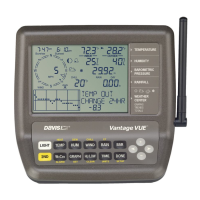45
Wind Chill
Wind Chill
Wind chill takes into account how the speed of the wind affects our perception of the
air temperature. Our bodies warm the surrounding air molecules by transferring heat
from the skin. If there is no air movement, this insulating layer of warm air molecules
stays next to the body and offers some protection from cooler air molecules.
However, wind sweeps away that warm air surrounding the body. The faster the
wind blows, the faster heat is carried away and the colder you feel. Wind has a
warming effect at higher temperatures.
Note: There is no windchill when the air temperature is at or above 93° F (-34° C).
Heat Index
Heat index uses temperature and the relative humidity to determine how hot the air
actually “feels.” When humidity is low, the apparent temperature will be lower than
the air temperature, since perspiration evaporates rapidly to cool the body. However,
when humidity is high (i.e., the air is more saturated with water vapor) the apparent
temperature “feels” higher than the actual air temperature, because perspiration
evaporates more slowly.
Note: Heat index and air temperature are equal at or below 0° F (-18° C).
Dew Point
Dew point is the temperature to which air must be cooled for saturation (100%
relative humidity) to occur, providing there is no change in water vapor content. The
dew point is an important measurement used to predict the formation of dew, frost,
and fog. If dew point and temperature are close together in the late afternoon when
the air begins to turn colder, fog is likely during the night. Dew point is also a good
indicator of the air’s actual water vapor content, unlike relative humidity, which takes
the air’s temperature into account. High dew point indicates high water vapor
content; low dew point indicates low water vapor content. In addition a high dew
point indicates a better chance of rain, severe thunderstorms, and tornados.
You can also use dew point to predict the minimum overnight temperature. Provided
no new fronts are expected overnight and the afternoon relative humidity is greater
than 50%, the afternoon’s dew point gives you an idea of what minimum temperature
to expect overnight. The higher the humidity is, the more accurate the dew point
prediction.
Note: Dew point is equal to the air temperature when the humidity is 100%.
Rain
Vantage Vue incorporates a tipping spoon rain collector in the ISS that measures 0.01''
or 0.2 mm for each tip of the spoon. Your station logs rain data in the same units it is
measured in and converts the logged totals into the selected display units (inches or
millimeters) at the time it is displayed. Converting at display time reduces possible
compounded rounding errors over time.
Four separate variables track rain totals: “rain rate,” “daily rain,” “monthly rain,” and
“yearly rain.” Rain rate calculations are based on the interval of time between each
spoon tip, which is each 0.01'' or 0.2 mm rainfall increment.

